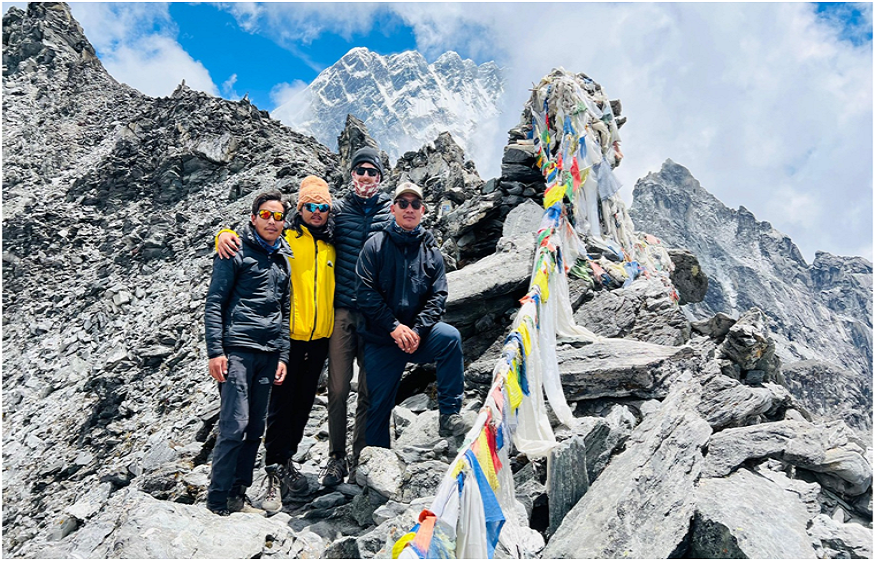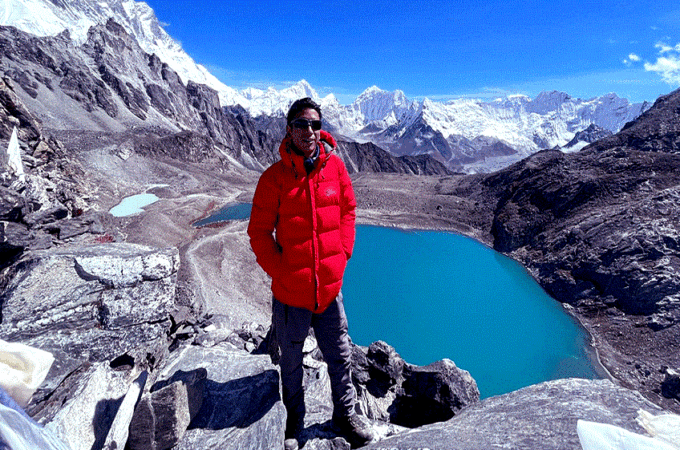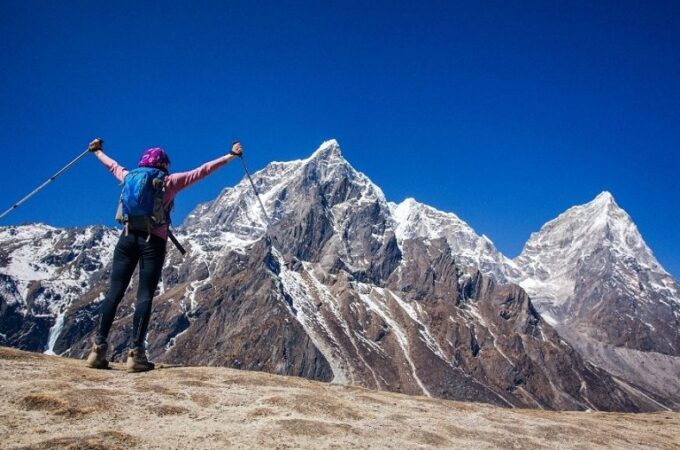
Your guide to Nepal’s Extreme Trekking Trails:
Nepal is the arrival of towering peaks, magical trails, and immortal societies. Domestic to eight of the world’s ten most elevated mountains, it offers an unparalleled trekking involvement — not fair for prepared explorers but for anybody looking for association with nature, legacy, and the soul of the Himalayas. Whether you long for emotional ice sheets, rich timberlands, otherworldly towns, or high-altitude challenges, Nepal’s trekking trails are created by the mountains themselves to convey wonderment and transformation.
This guide takes you through four of Nepal’s most famous treks: the Annapurna Base Camp trek, Langtang Valley trek, Manaslu Circuit trek, and Everest Three Pass trek. Each of these ventures opens the entryway to breathtaking scenes and the soul of the individuals who call the Himalayas domestic. Plan to inundate yourself in the extraordinary.
Discover the Heart of the Himalayas on the Annapurna Base Camp Trek
The Annapurna Base Camp trek is a classic Himalayan enterprise that combines staggering mountain sees, conventional culture, and a sense of profound tranquility. Settled in the Annapurna Preservation Zone, this path winds through the heart of central Nepal, driving trekkers to the foot of Annapurna I (8,091 m) — the world’s tenth-highest mountain.
A Path Through Woodlands, Towns, and Glaciers
The trek regularly starts from Nayapul or Ghandruk, a short drive from the lake city of Pokhara. As you rise, the path winds through terraced areas, bamboo forests, and rhododendron woodlands. Conventional Gurung and Magar towns such as Chhomrong, Sinuwa, and Bamboo give openings to rest, eat, and lock in with the wealthy social legacy of the region.
The more profound you trek into the Modi Khola Valley, the more the scene changes. Thick wildernesses deliver way to elevated landscape, where frosty streams wind underneath soak cliffs. The last extend enters the sacrosanct Annapurna Haven, a normal amphitheater of frigid monsters. Coming to Annapurna Base Camp (4,130 m) is a passionate climax, encompassed by peaks like Hiunchuli, Gangapurna, and the unmistakable Machapuchare (Fishtail) — venerated as sacrosanct and never climbed.
Why Select Annapurna Base Camp?
This trek offers an idealized mix of availability, teahouse consolation, and visual splendor. It ordinarily takes 7 to 12 days and is considered guidely in trouble, making it perfect for first-time trekkers and prepared explorers alike. With each step, the Annapurna region uncovers the control and peace of the mountains.
Step into Tranquility on the Langtang Valley Trek
Just north of Kathmandu, the Langtang Valley trek gives an exceptional elude into nature, culture, and calm reflection. In spite of the fact that it is lesser-known than other treks, Langtang offers colossal rewards — from otherworldly experiences to untainted view — all inside a moderately brief timeframe.
Into the Wilds of Langtang National Park
The trip starts with a drive to Syabrubesi, after which the path takes after the Langtang Khola Waterway, climbing relentlessly through thick woodlands of pine, oak, and rhododendron. The region is wealthy in biodiversity — domestic to ruddy pandas, Himalayan dark bears, langurs, and handfuls of winged creature species. As you rise in height, little settlements rise, each molded by Tibetan Buddhist traditions.
Lama Lodging, Ghodatabela, and Langtang Town — modified after the 2015 seismic tremor — offer impressions of strength and neighborliness. Advance up lies Kyanjin Gompa (3,870 m), a quiet town encompassed by peaks and icy masses. The old cloister here remains a put of calm revere and otherworldly depth.
High Sees and Profound Culture
From Kyanjin, trekkers regularly climb up to Tserko Ri (4,984 m) or Kyanjin Ri, high edges with all encompassing views of Langtang Lirung, Dorje Lakpa, and icy masses. The valley underneath gleams brilliant at dawn, and the stillness is profound.
The Langtang Valley trek regularly takes 7 to 10 days, making it one of Nepal’s best brief treks. For those who esteem genuineness and peace over notoriety, Langtang is an otherworldly trek through untouched Himalayan beauty.
Embrace the Untamed on the Manaslu Circuit Trek
The Manaslu Circuit trek is a farther, challenging, and profoundly fulfilling path that circles Mount Manaslu (8,163 m) — the eighth-highest peak on soil. Distant and less swarmed than the Annapurna or Everest districts, this trek plunges profoundly into the wild and the culture of Nepal’s good country communities.
A Travel Through Separated Valleys and high Passes
Starting from Soti Khola, the trek winds through tropical marshes, crossing suspension bridges and waterfalls some time recently rising into snow capped scenes and Tibetan-style towns. The Budhi Gandaki Stream carves sensational gorges through the soil, making each twist of the path a modern wonder.
Trekkers pass through towns like Namrung, Lho, Sama Gaun, and Samdo, each exhibiting Buddhist impact and centuries-old ways of life. Stone homes, yak pastures, mani dividers, and supplication banners color the scene. Pungen Gompa, settled underneath the Manaslu ice sheet, offers a thoughtful withdrawal some time recently on the high pass.
The high point of the trek is the crossing of Larkya La Pass (5,106 m) — an extreme, cold challenge that conveys shocking views of Himlung, Cheo Himal, and Annapurna II. The plunge into the Marsyangdi Valley marks the trek’s completion and rewards trekkers with a last impact of mountain majesty.
A trek for the Courageous Soul
The Manaslu Circuit trek ranges around 14 to 18 days and requires an uncommon confined region permit and an enlisted guide. Its trouble level is a guide to difficulty, making it appropriate for experienced explorers looking for an off-the-beaten-path endeavor. This trek is immaculate wild — where mountains talk, and hush heals.
Conquer the high Himalayas on the Everest Three Pass Trek
When it comes to epic Himalayan undertakings, few trails match the Everest Three Pass trek. This circuit takes you over three high passes in the incredible Khumbu region, advertising a tough challenge near the most prominent mountain seen on soil. For those longing for elevation and achievement, this is the extreme trek.
Beyond Everest Base Camp
Beginning in Lukla, the trek takes after the conventional Everest course to Namche Bazaar, a dynamic Sherpa town roosted on the mountainside. From here, the path climbs toward Tengboche, Dingboche, and at that point separates from the ordinary course to handle the high passes.
The to begin with jump is Kongma La (5,535 m), taken after by the cold excellence of Cho La (5,420 m), and at last the wide valley of Renjo La (5,360 m). These passes interface the primary Everest course with the inaccessible Gokyo Valley and the sacrosanct turquoise Gokyo Lakes — a few of the most striking snow capped lakes in the world.
Along the way, trekkers visit Everest Base Camp (5,364 m) and climb Kala Patthar (5,545 m) — the best vantage point for a close-up of Everest, Lhotse, and Nuptse. The route circles through old cloisters, frigid moraines, and conventional Sherpa settlements like Thame and Phortse.
A Travel of Elevation and Achievement
The Everest Three Pass trek takes approximately 18 to 21 days and is physically requesting. It requires legitimate acclimatization, high wellness, and mental coarseness. But the rewards are unparalleled — dawns over Everest, sacrosanct trails strolled by mountain climbers and friars, and a feeling of triumph that as it were the Himalayas can offer.
This trek is more than a course; it is a change. You don’t see the mountains here — you feel them within.
The Culture and Soul of the Trail
Across these four treks, one consistently ties them: the profound social and otherworldly texture of the Himalayas. Trekking in Nepal isn’t as if it were almost coming to a perspective or summit — it’s around being invited into homes, sharing dal bhat by the fire, turning a supplication wheel, or sitting in hush underneath antiquated stupas.
Each region presents trekkers to a diverse ethnic character — Gurungs in Annapurna, Tamang and Tibetan people groups in Langtang, Tibetan Buddhist communities in Manaslu, and Sherpas in Everest. These individuals have lived in agreement with nature for centuries, and their conventions improve each footstep.
You’ll pass cloisters gleaming with butter lights, listen to chants floating through the trees, and cross bridges layered with colorful supplication banners — each symbolizing a wish carried by the wind.
The Himalayas are not nature’s showstopper; they are Nepal’s living temples.
Preparing for Your Himalayan trek
To make the most of these trekking encounters, astute arrangement is key:
Best Time to Trek
The perfect seasons are spring (March–May) and harvest time (September–November). These periods offer clear skies, steady climate, and dynamic landscapes.
Fitness and Gear
Prepare with cardio preparing, long climbs, and hill climbs. Fundamental equip includes:
- Warm clothing layers
- Waterproof boots
- Trekking poles
- A quality resting bag
- Water filtration tablets
- Headlamp and control bank
Permits
- Annapurna and Langtang require a TIMS card and preservation range permits.
- Manaslu needs limited region grants, and you must trek with a guide.
- Everest requires the Sagarmatha National Stop allow and a Khumbu Rustic Region passage permit.
Guided or Solo?
While solo treks are conceivable on Annapurna and Langtang, Manaslu and Everest Three Passes are best done with an authorized guide. Guides give security, social bits of knowledge, and neighborhood support.
Conclusion:
Nepal’s extreme trekking trails are more than courses through the Himalayas — they are solicitations to investigate life in its most crude and magnificent shape. Whether you’re strolling through blooming rhododendron woodlands in Annapurna, pondering at a religious community in Langtang, crossing a toll pass in Manaslu, or standing at the foot of Everest — you’re portion of something antiquated, significant, and life-changing.
The Annapurna Base Camp trek, Langtang Valley trek, Manaslu Circuit trek, and Everest Three Pass trek speak to the best of what Nepal offers: nature, challenge, association, and ponder. Each path whispers its possessive stories, and each travel carves modern quality into the soul.
So bind up your boots. The Himalayas anticipate — not fair to be seen, but to be experienced, step by exceptional step.
Contact Details
Company address: Everest Trekking Routes Pvt. Ltd.
16 Khumbu, Nayabazaar, Kathmandu, Nepal
Mobile : +977-9843467921 (Rabin)


